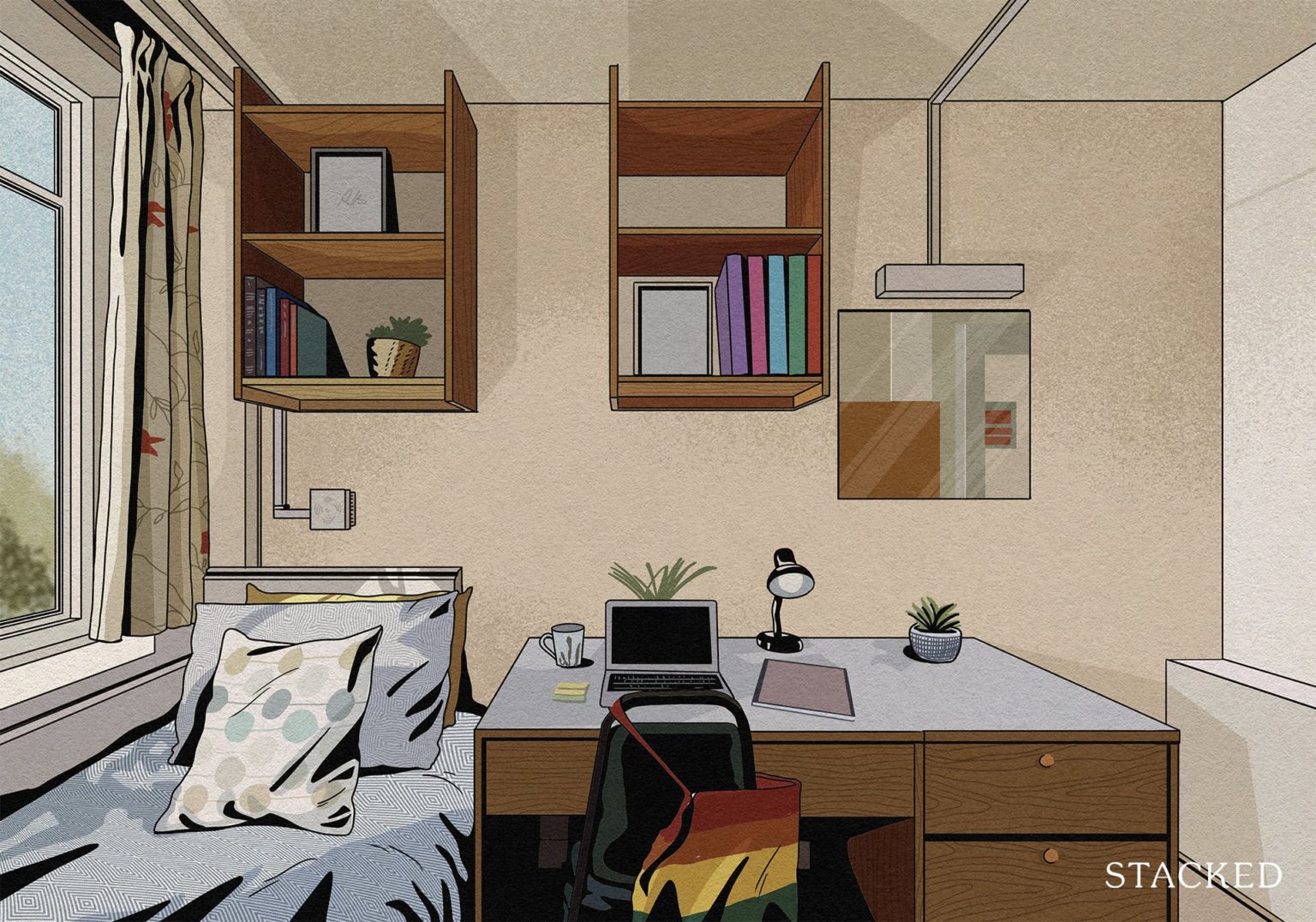6 Important Things You Cannot Overlook On A Condo Site Plan Before You Buy
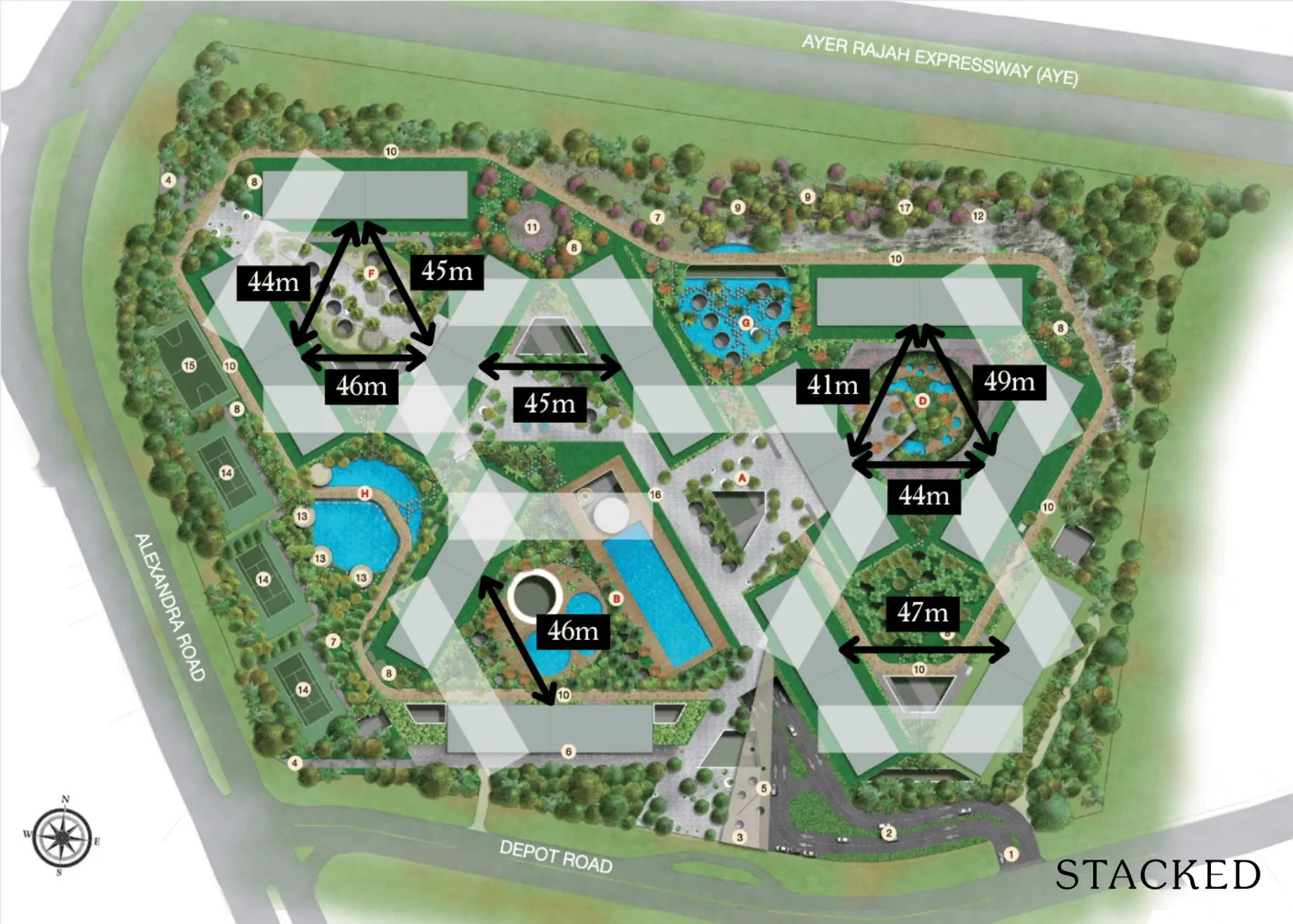
Get The Property Insights Serious Buyers Read First: Join 50,000+ readers who rely on our weekly breakdowns of Singapore’s property market.
A seasoned content strategist with over 17 years in the real estate and financial journalism sectors, Ryan has built a reputation for transforming complex industry jargon into accessible knowledge. With a track record of writing and editing for leading financial platforms and publications, Ryan's expertise has been recognised across various media outlets. His role as a former content editor for 99.co and a co-host for CNA 938's Open House programme underscores his commitment to providing valuable insights into the property market.
One difference between experienced property buyers and newcomers is where their attention goes: first-time buyers tend to focus on the model and the well-decorated show flat, whereas seasoned buyers spend more time on the floor plans and site plans. These two-dimensional representations can tell you a lot about a development, and while we’ve looked at the floor plan before, this time, we’re going to focus on the site plan:
What to look out for in site plans
1. Check which stacks are closest to the main roads or train tracks
In general, stacks closer to roads and tracks will be subject to noise pollution and light pollution (from street lamps or car headlight). For these stacks, you may want to pick the higher floor units, which are less exposed to the noise.
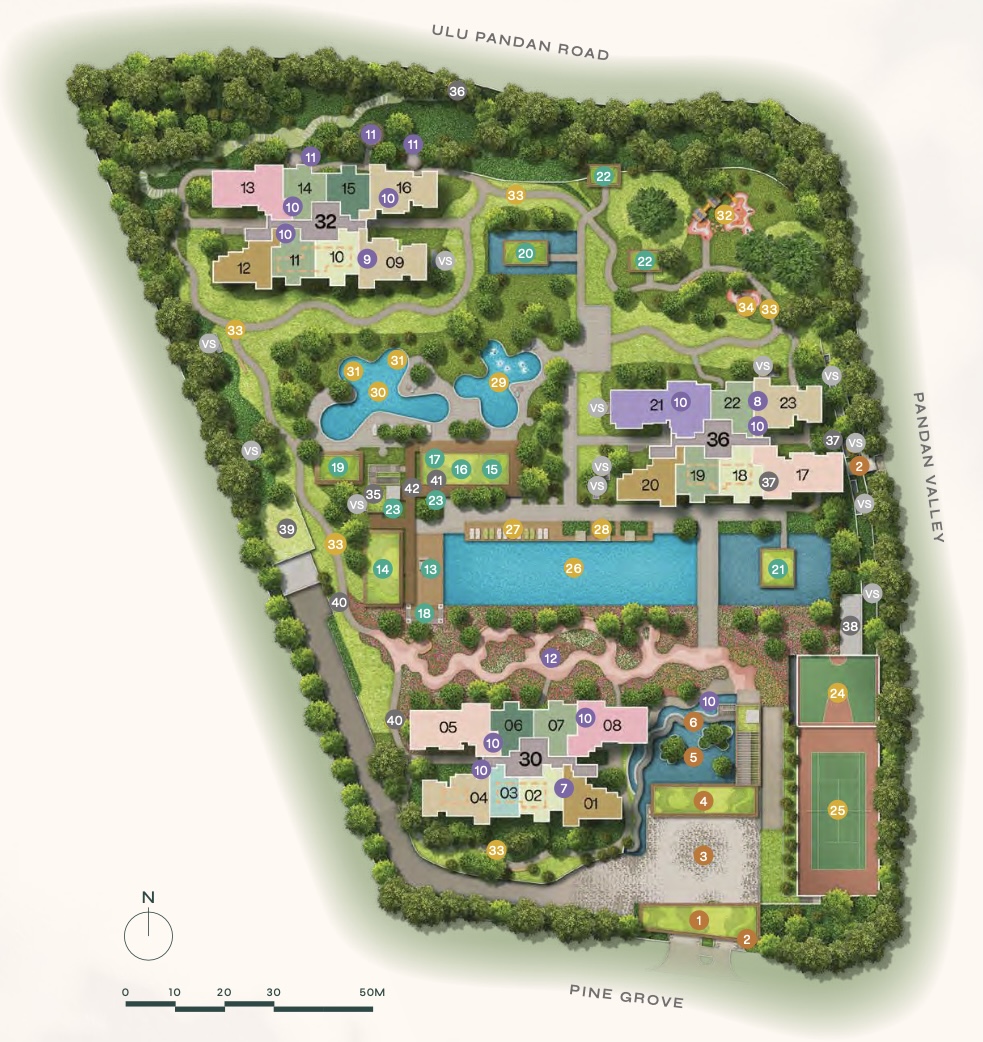
Alternatively, you can check if the developer has safeguards. With places like Pinetree Hill, for example, its natural location on a “hill” allows units facing the busy Ulu Pandan road to have more privacy. Of course, this is also where looking purely at the site plan doesn’t always tell you the full picture, as the 2D nature of it doesn’t communicate the elevation of the land.
If you’re not sure how noisy the road is, you can also inquire about the type of roads nearby. Bigger main roads can mean traffic and noise, but smaller roads may not be an issue. If you look at the site layout of The Continuum, for example, it may be alarming to see a road running down the middle of the project; but as it’s a relatively small and low-traffic lane, it doesn’t constitute a serious disamenity.
2. Look for side gates and alternative access points
Most people prefer projects with different entry points. In theory, having only one entry point will make that spot jammed and crowded, and the block closest to it will experience the most noise.
However, this isn’t always true. E.g. For small developments with 200 or fewer units, this may not be an issue; and some condos have very spacious drop-off points. These are factors to consider when looking at the site plan.

It’s also a good idea to check how far a particular stack is from a side gate, and the nature of the side gate itself. Costa Del Sol, for instance, appears as a 19-minute walk to East Coast Beach via Google Maps. But actually, there’s a side entrance that leads to an underground passage, and the walking time to the beach is under five minutes. So we’d ask the sales team more about all the exits you see around the perimeter.
Likewise, the site plan would not show you other advantages of the condo outside the development (like having a sheltered walkway built to take you to the bus stop or MRT station).
If there are no or few side gates, our concern would be having to walk all the way to the main entrance each time. This can be inconvenient if your stack is deep inside the condo.
3. Check how far the facilities are from different stacks
This is a balance between how far you want to walk to said facilities, versus how sensitive you are to the noise.
In most (not all) condos, facilities will cluster around the largest pool; the typical setup is to have the pool, clubhouse, and gym all in very close proximity. Stacks closer to these clusters are more convenient – but you’ll also hear more people going to and fro, especially on weekends.
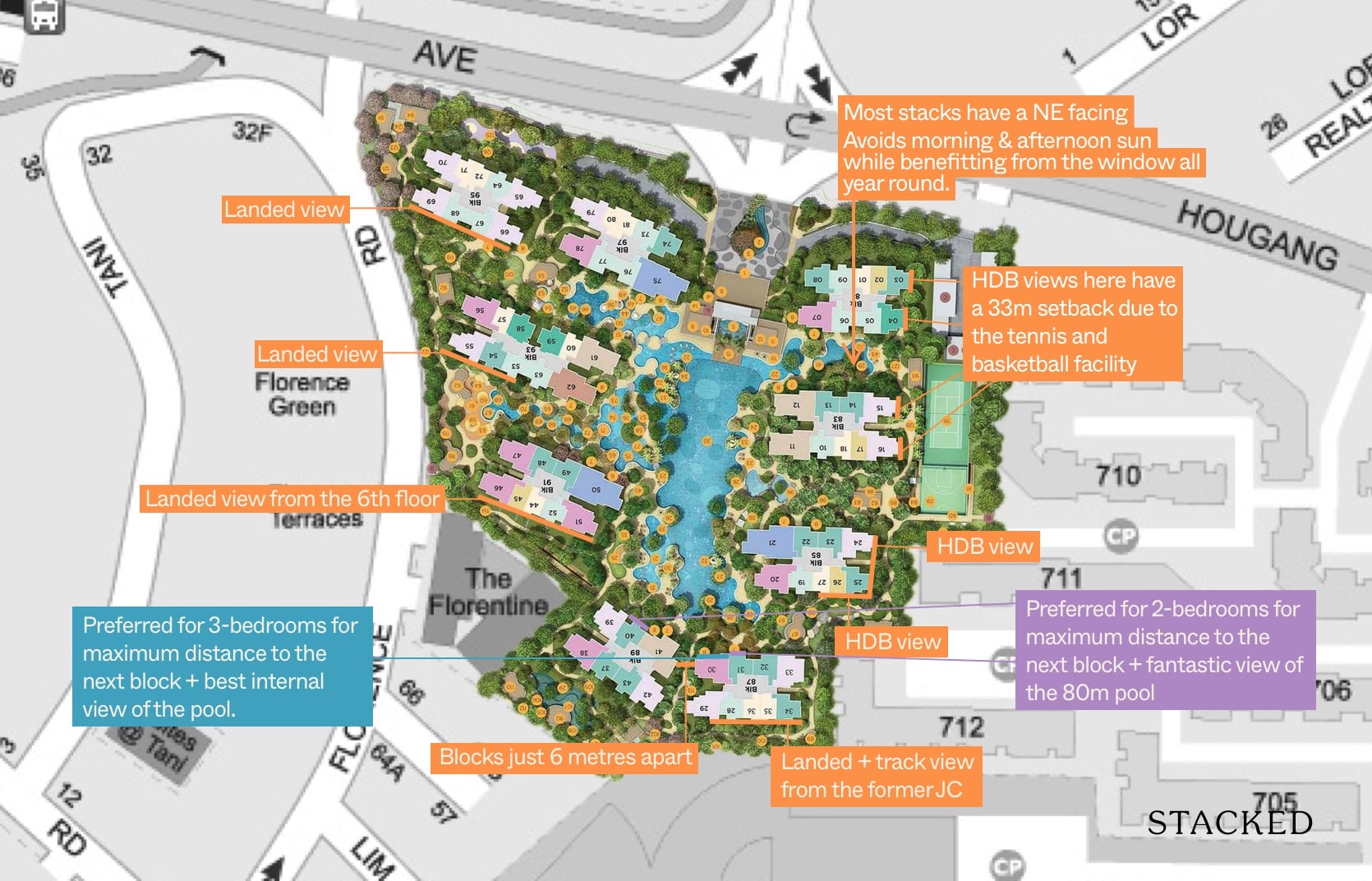
What’s not too obvious in the site plans are vertical facilities (e.g., sky gardens or above-ground tennis courts.) You may want to check if these are close to your floor. Again, closer is more convenient, but also means more noise and traffic. If you’re one floor above the pool level, for instance, you’ll often experience a longer waiting time for the lift, as it unloads before coming up to you.
4. For older projects, check which walkways are sheltered
Unless you’re okay with braving the rain, be aware that some condos may not have fully sheltered walks to the exit. It is, for instance, less common to find underground car parks in older condos; so this could mean having to walk to your car in the middle of a downpour.

This is an important consideration for older folks, as slipping and falling are more serious concerns. We also know that some pet owners dislike long and exposed paths, as their dogs come back soaking wet if it starts to rain part way through.
5. Check out the distances between each stack
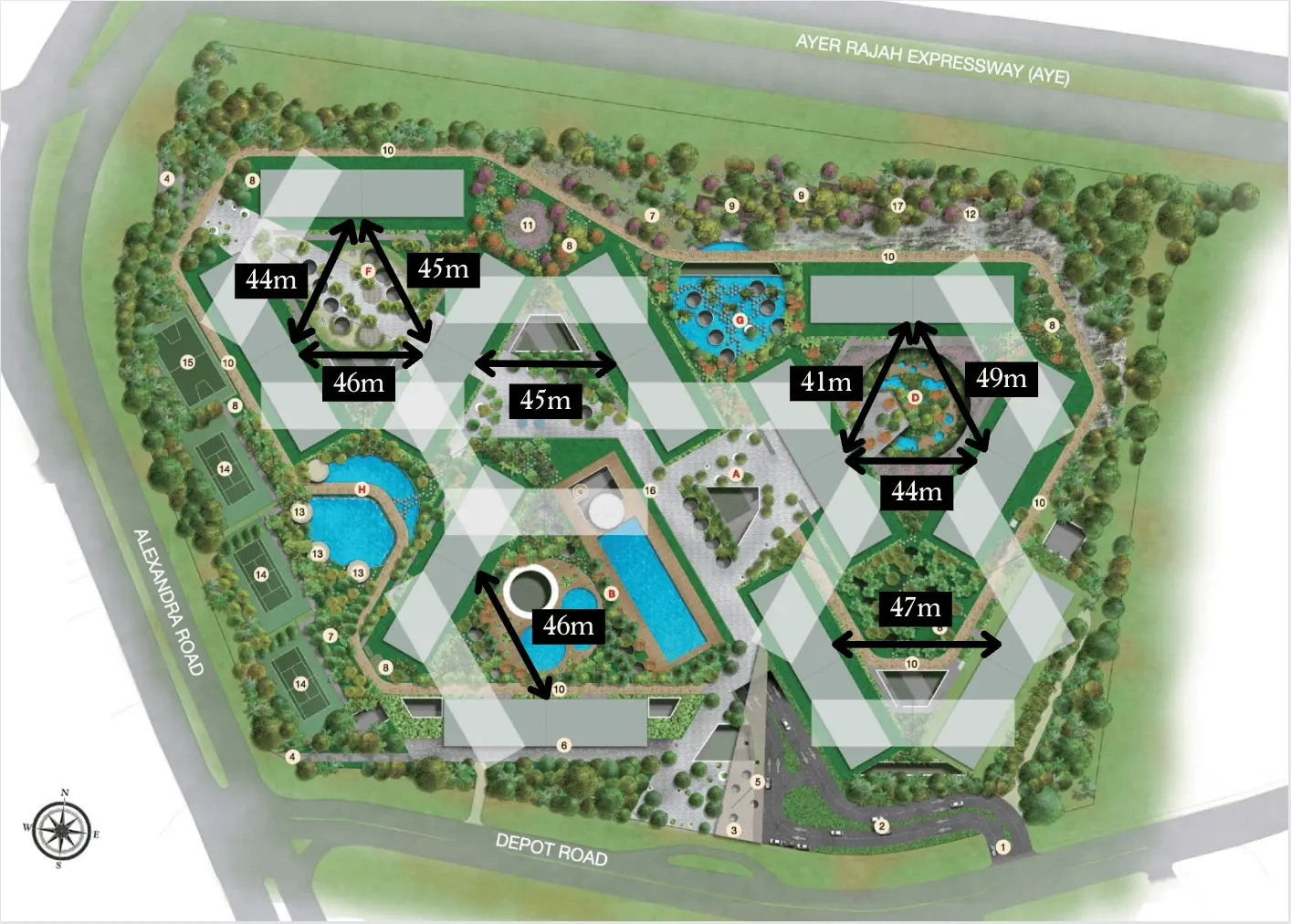
There are many “rules of thumb” about the right distance; and we’ve heard everything from “at least 100 metres” to “about three minutes’ walk across from each other.” This is ultimately subjective: the point is to not feel “hemmed in” by the other blocks. Ideally, you won’t end up looking into someone’s living room or service yard, and vice versa.
Some condos tend to be better at this, as in recent years we’ve seen the rise of 80-20 concepts. This is when developers give over 80 per cent of the land space to communal grounds, which means fewer units and more “breathing space” between them.
Alternatively, some overcome the proximity of each block with unusual layouts. The Interlace has one of the most unique approaches here, as the broken-up blocks (they look like scattered Lego bricks) allow residents to see through the opposite structures. This way the whole project feels more spacious.
Some pet owners have also learned to pay attention to site plans, as many condos disallow pets near the pool or gym areas. If the land area is small, and the facilities are tightly clustered, this may confine your dog-walking activities to just the perimeter of the condo.
6. There may be stacks that overlook the power station or communal dump
This is less common in newer projects, as developers now try to locate these utility areas underground. In older condos, however, you can still find units where the dump or other undesirable areas are visible from the balcony. In fact, recently there was an infamous project where the second-floor units were positioned directly above the toilets.
Some buyers zero in on these “disadvantaged” units, expecting a better price because they’re not fussy. This could be a viable strategy for house hunters on a budget. Most buyers, however, scrutinise site layouts to avoid such views.
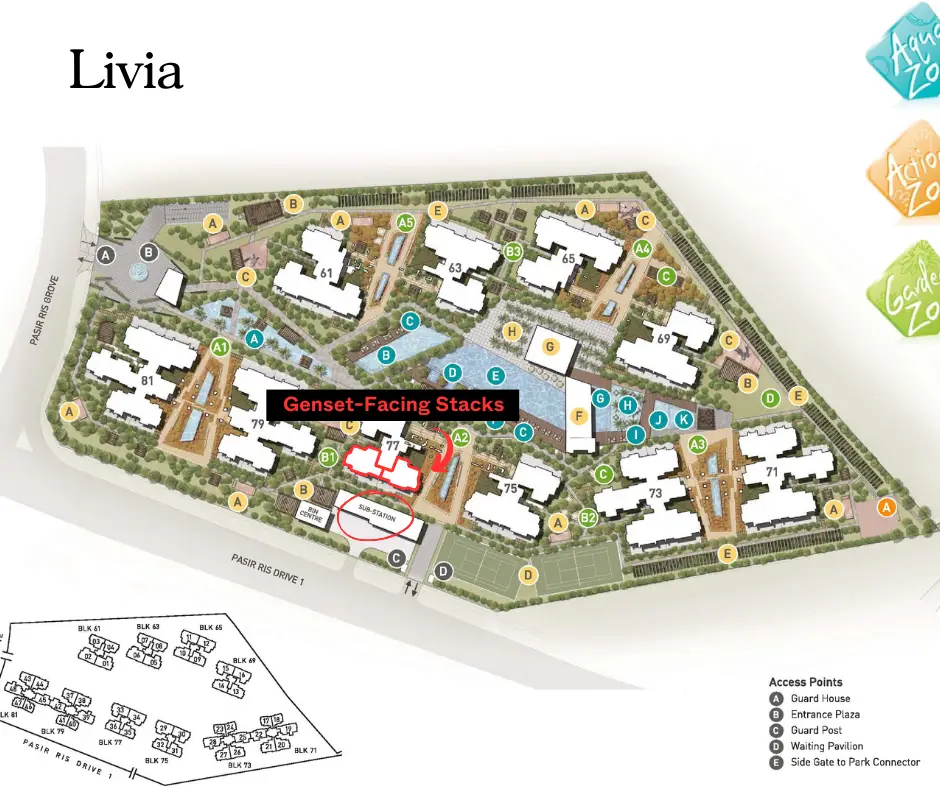
Property Investment InsightsHow Much Does A “Bad” Facing Really Affect Your Property Value?
by Ryan J. Ong
Nevertheless, other than the not-so-nice views from your window, there doesn’t seem to be as negative an effect on future resale prices as most buyers might think. We’ve looked at a few condos to see if there’s an impact, but it doesn’t seem to be conclusive at this point (it might vary depending on condo).
If you’re still uncertain or have questions, reach out to Stacked with the site plan if you have it; we can guide you through your decision. Do also check out the next part of this article, where we highlight what to look out for in unit layouts. If you’d like to get in touch for a more in-depth consultation, you can do so here.
Ryan J. Ong
A seasoned content strategist with over 17 years in the real estate and financial journalism sectors, Ryan has built a reputation for transforming complex industry jargon into accessible knowledge. With a track record of writing and editing for leading financial platforms and publications, Ryan's expertise has been recognised across various media outlets. His role as a former content editor for 99.co and a co-host for CNA 938's Open House programme underscores his commitment to providing valuable insights into the property market.Read next from Editor's Pick
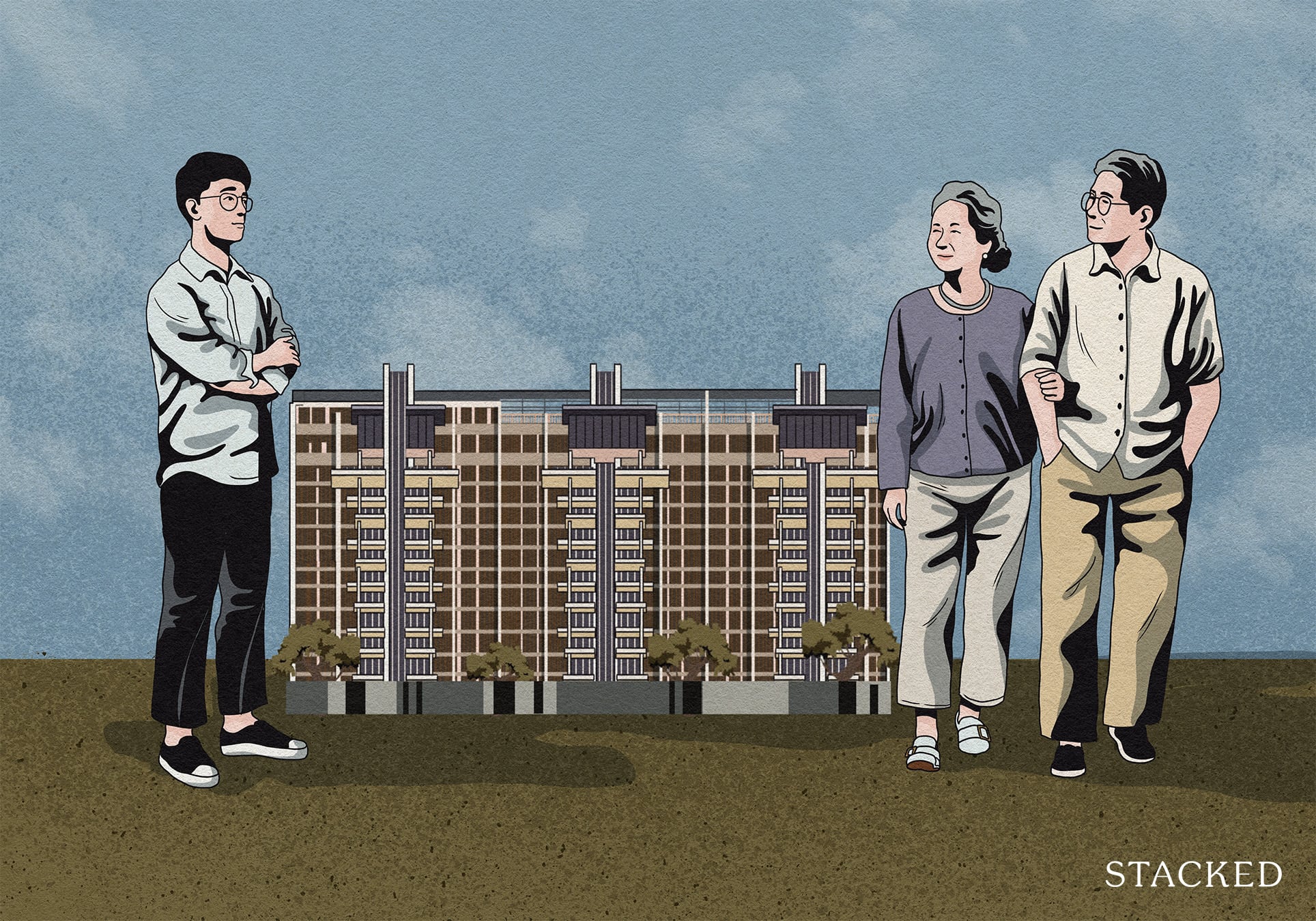
Property Market Commentary What “Lucky” Singaporean Homebuyers Used To Get Away With — That You Can’t Today
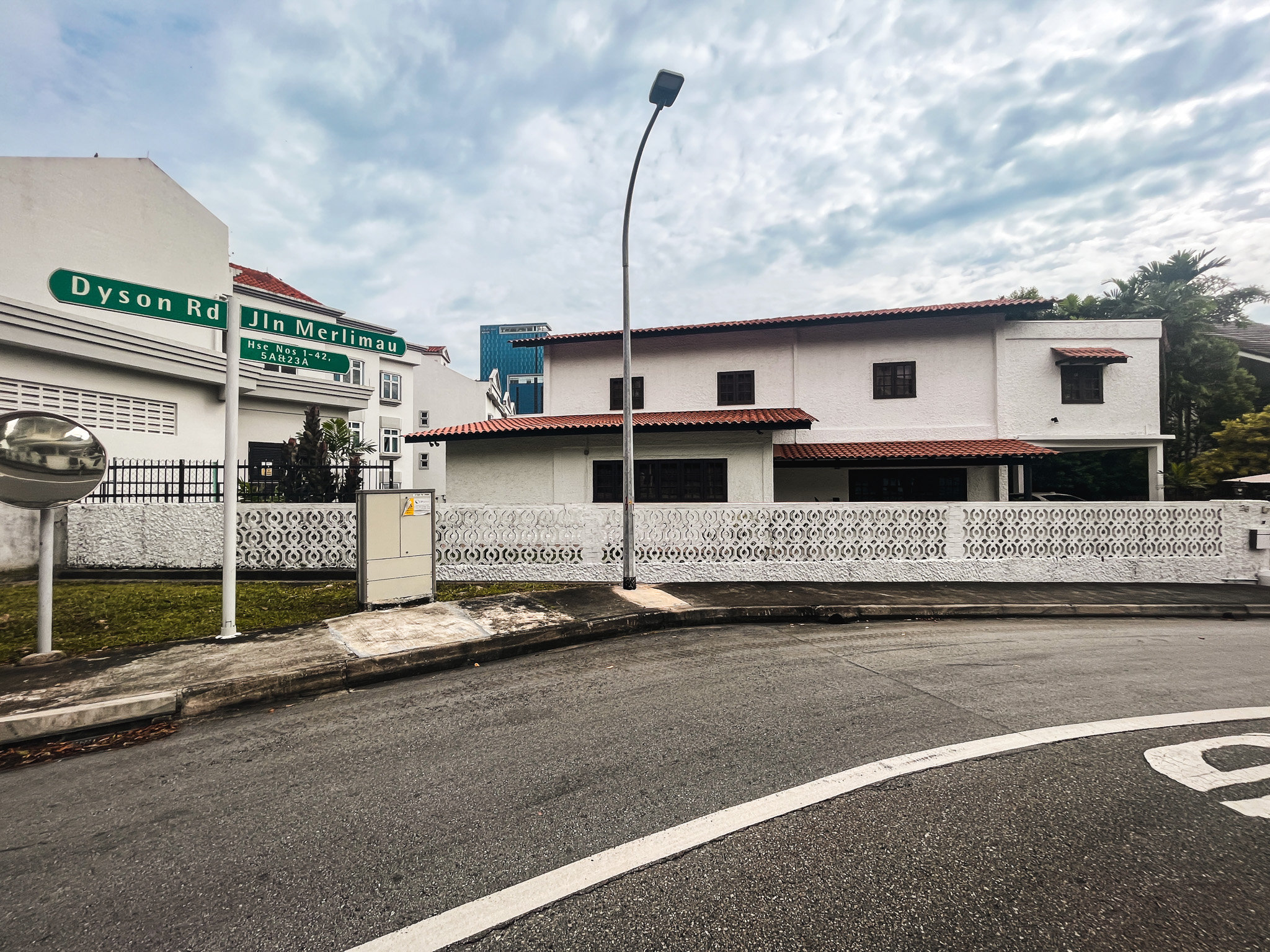
Landed Home Tours We Toured A Quiet Freehold Landed Area Near Reputable Schools — Where Owners Rarely Sell

Overseas Property Investing The Biggest Mistake Singaporeans Make When Analysing Overseas Property

Property Market Commentary 7 Close To TOP New Launch Condos In 2026/27 For Those Looking To Move In Quick
Latest Posts

Pro This 698-Unit Ang Mo Kio Condo Launched At The Wrong Time — And Still Outperformed Peers
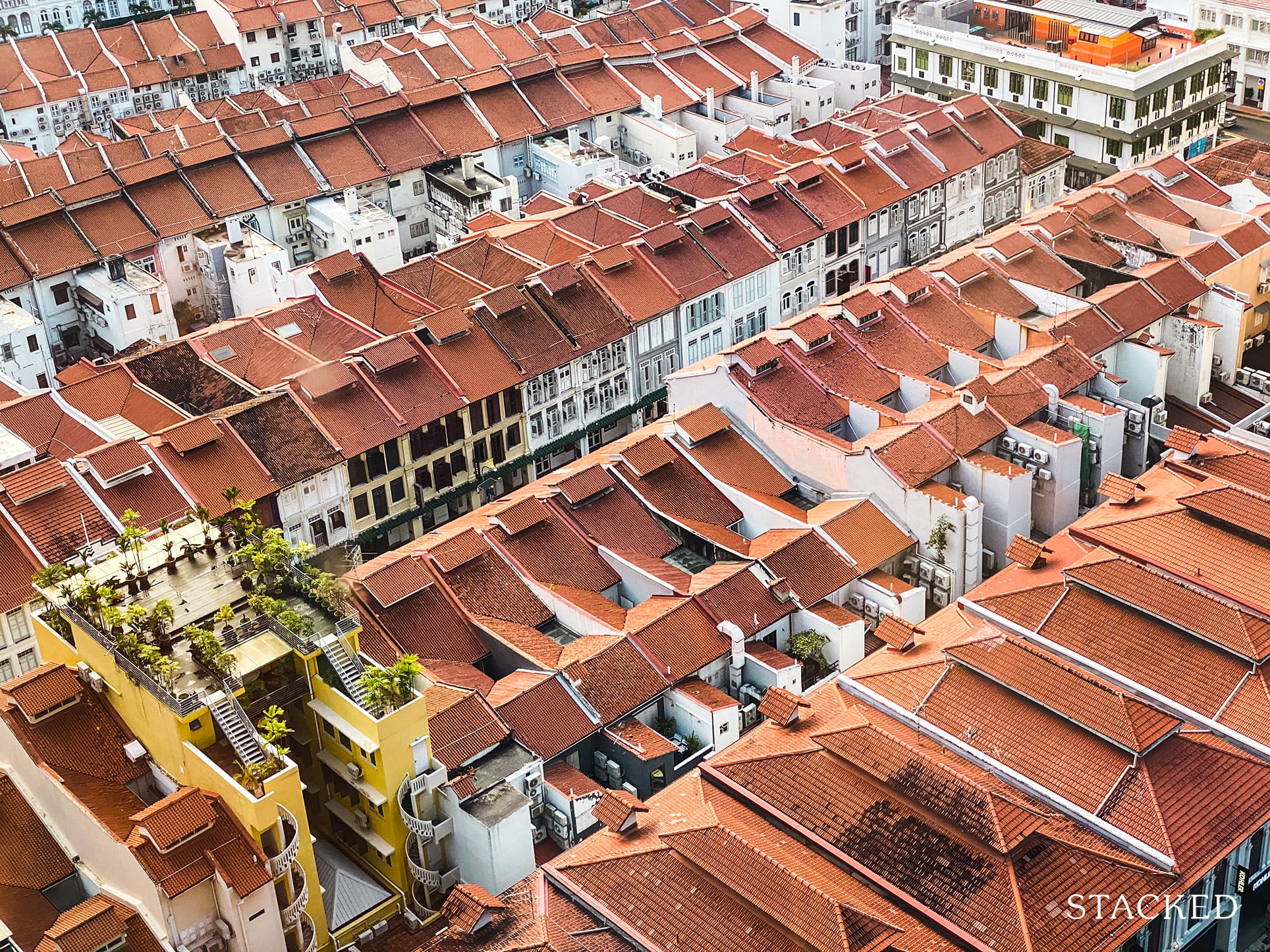
Singapore Property News $281.2M in Singapore Shophouse Deals in 2H2025 — But That Number Doesn’t Tell the Full Story
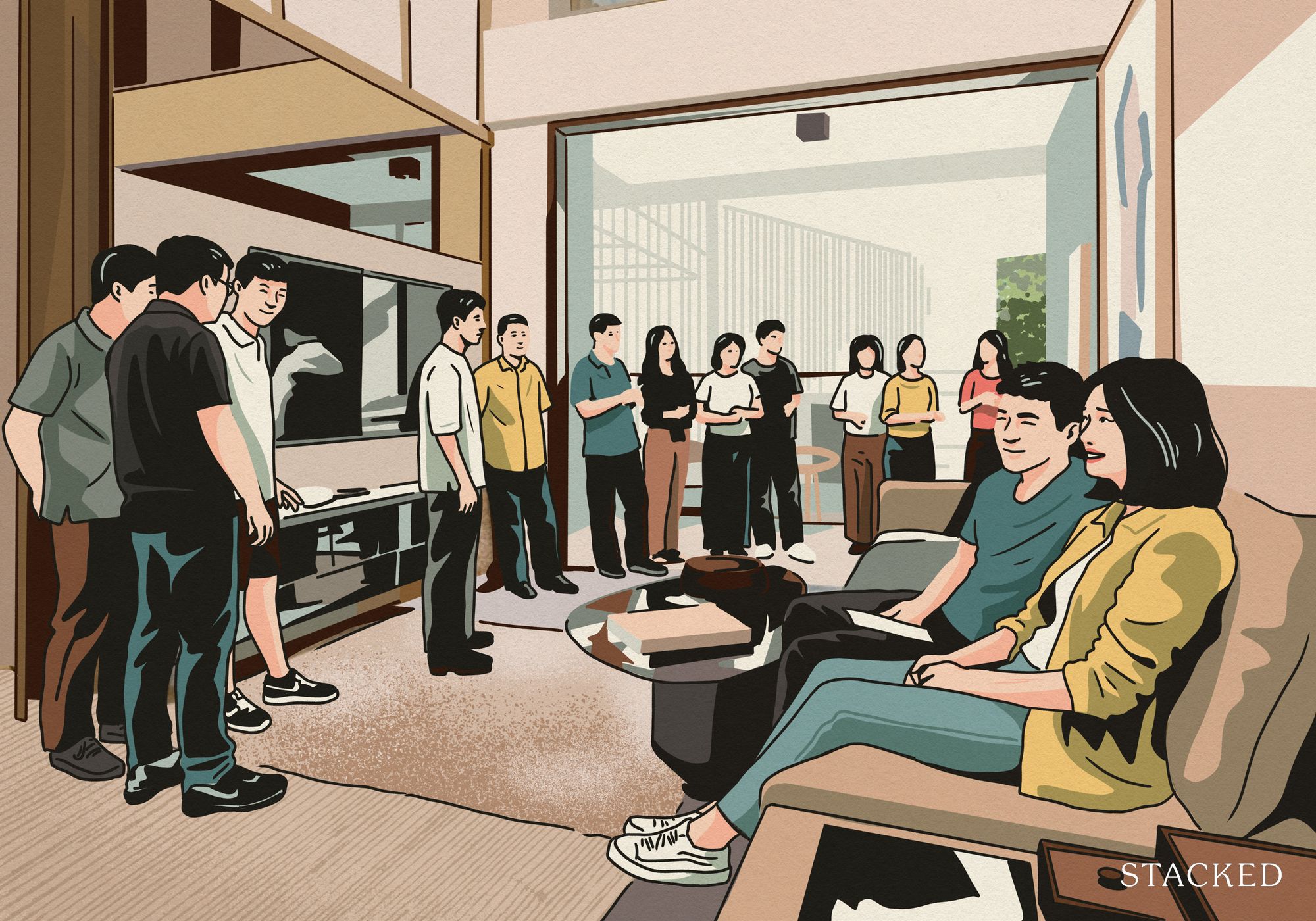
Property Market Commentary 5 Key Features Buyers Should Expect in 2026 New Launch Condos

Property Investment Insights These Resale Condos In Singapore Were The Top Performers In 2025 — And Not All Were Obvious Winners

Singapore Property News CapitaLand–UOL’s $1.5 Billion Hougang Central Bid May Put Future Prices Above $2,500 PSF
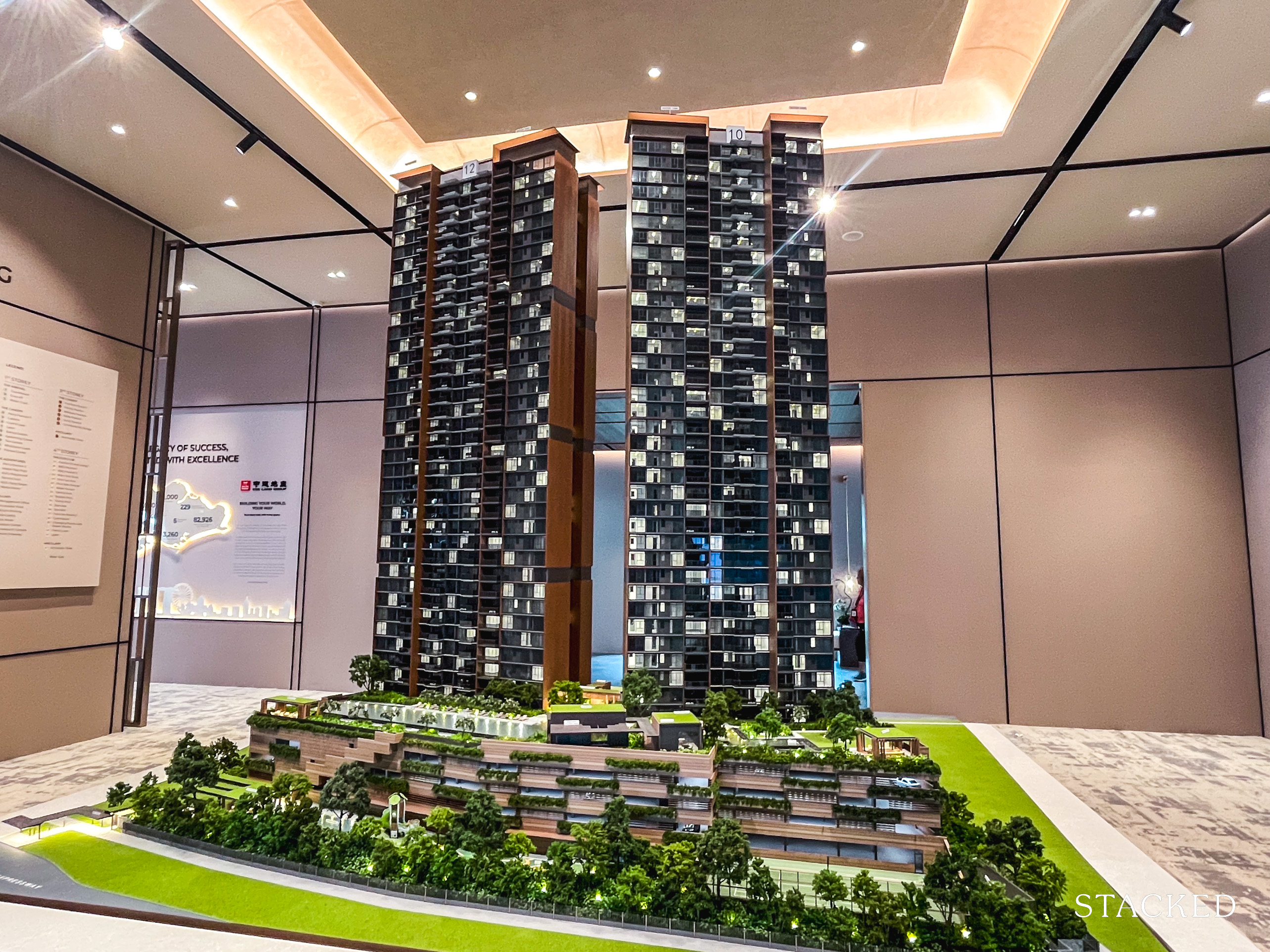
Singapore Property News Why New Condo Sales Fell 87% In November (And Why It’s Not a Red Flag)

Pro How A 944-Unit Mega-Condo In Pasir Ris Ended Up Beating The Market
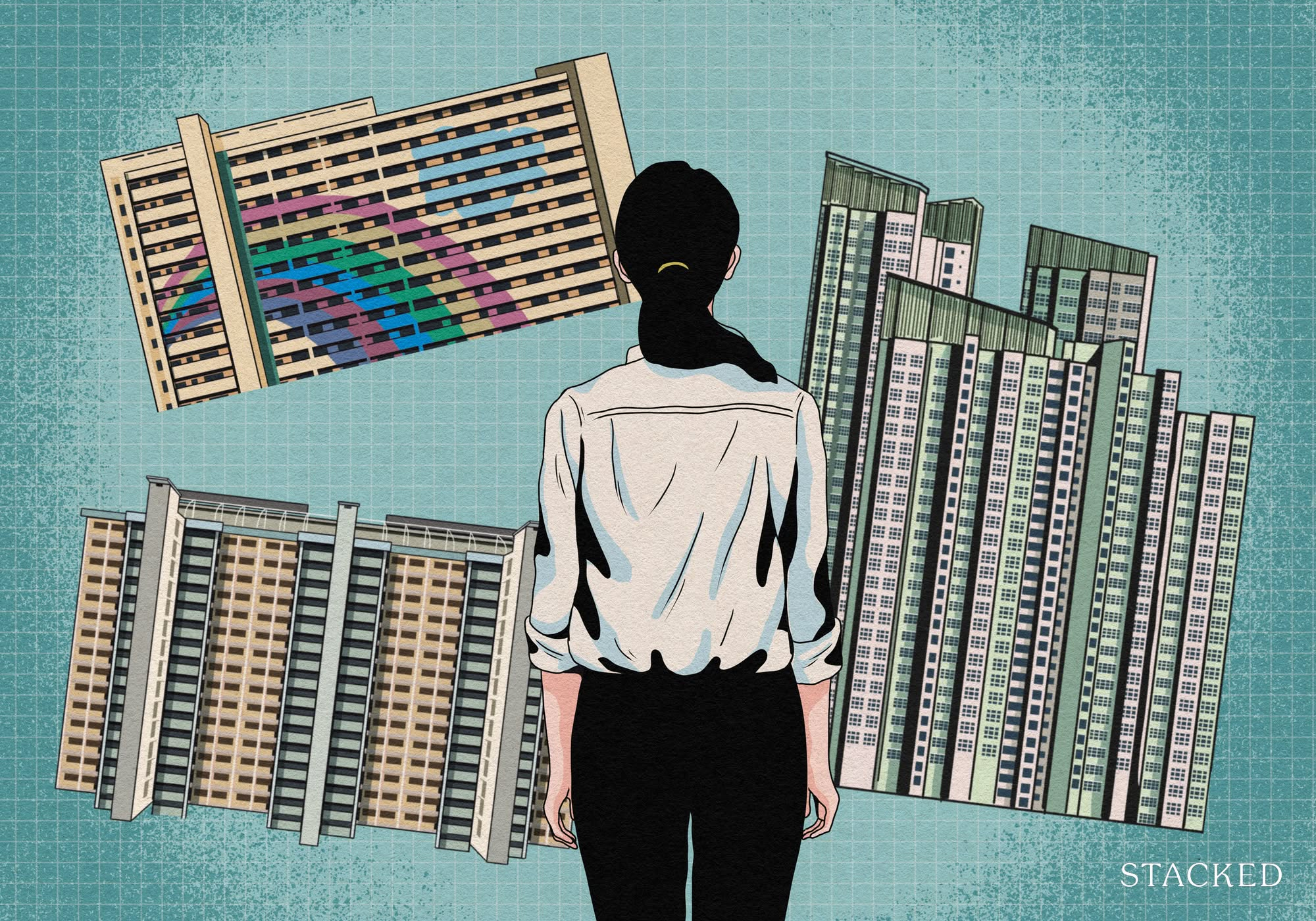
Property Investment Insights What Changed In Singapore’s Property Market In 2025 — And Why It Matters

Singapore Property News How Much Smaller Can Singapore Homes Get?

Pro How Much More Should You Really Pay for a Higher Floor or Sea View Condo?
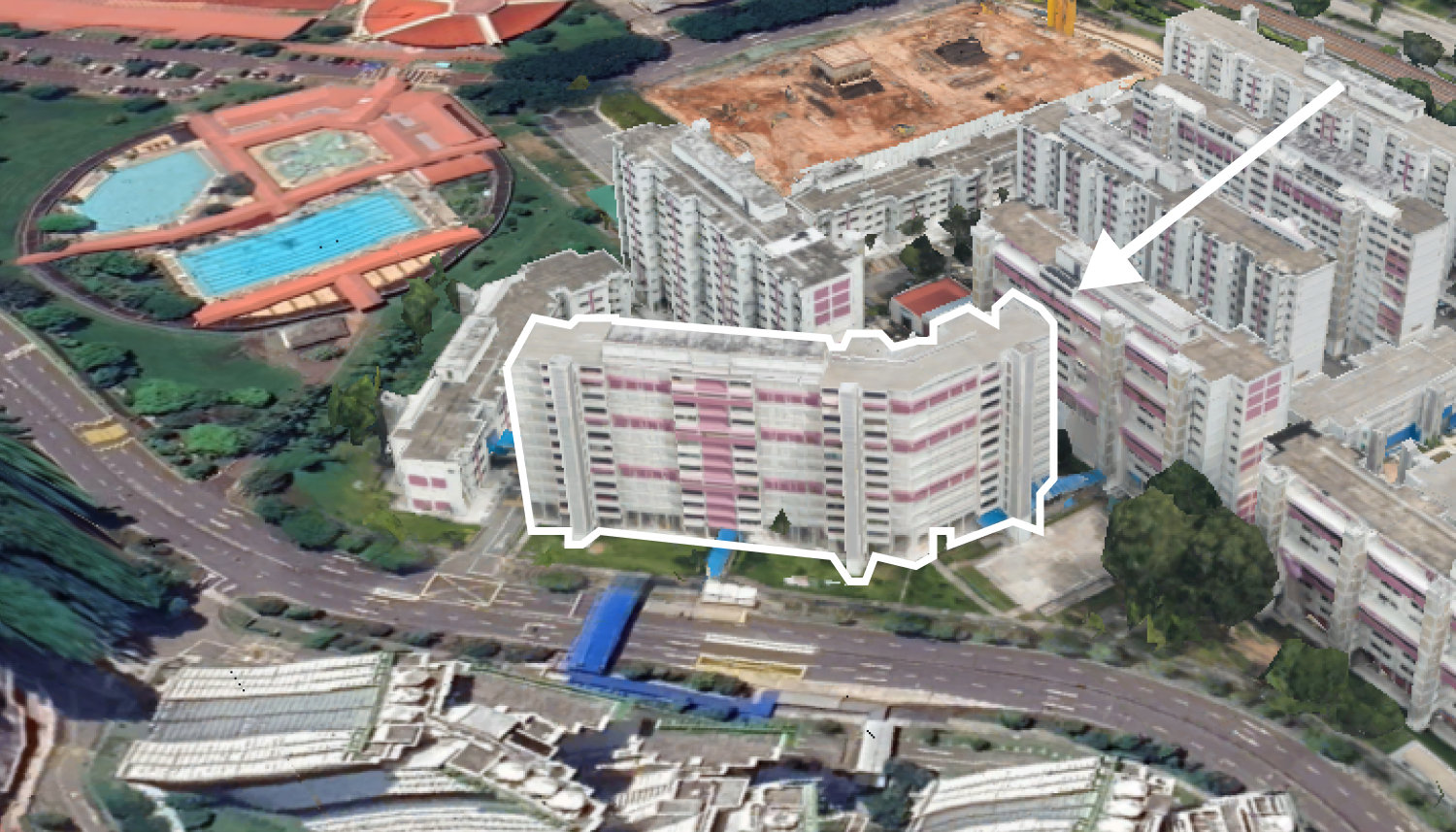
On The Market 5 Spacious 5-Room HDB Flats Under $600K You Can Still Buy Today

Property Market Commentary Why It’s So Much Harder For Young Singaporeans To Buy A Home Today
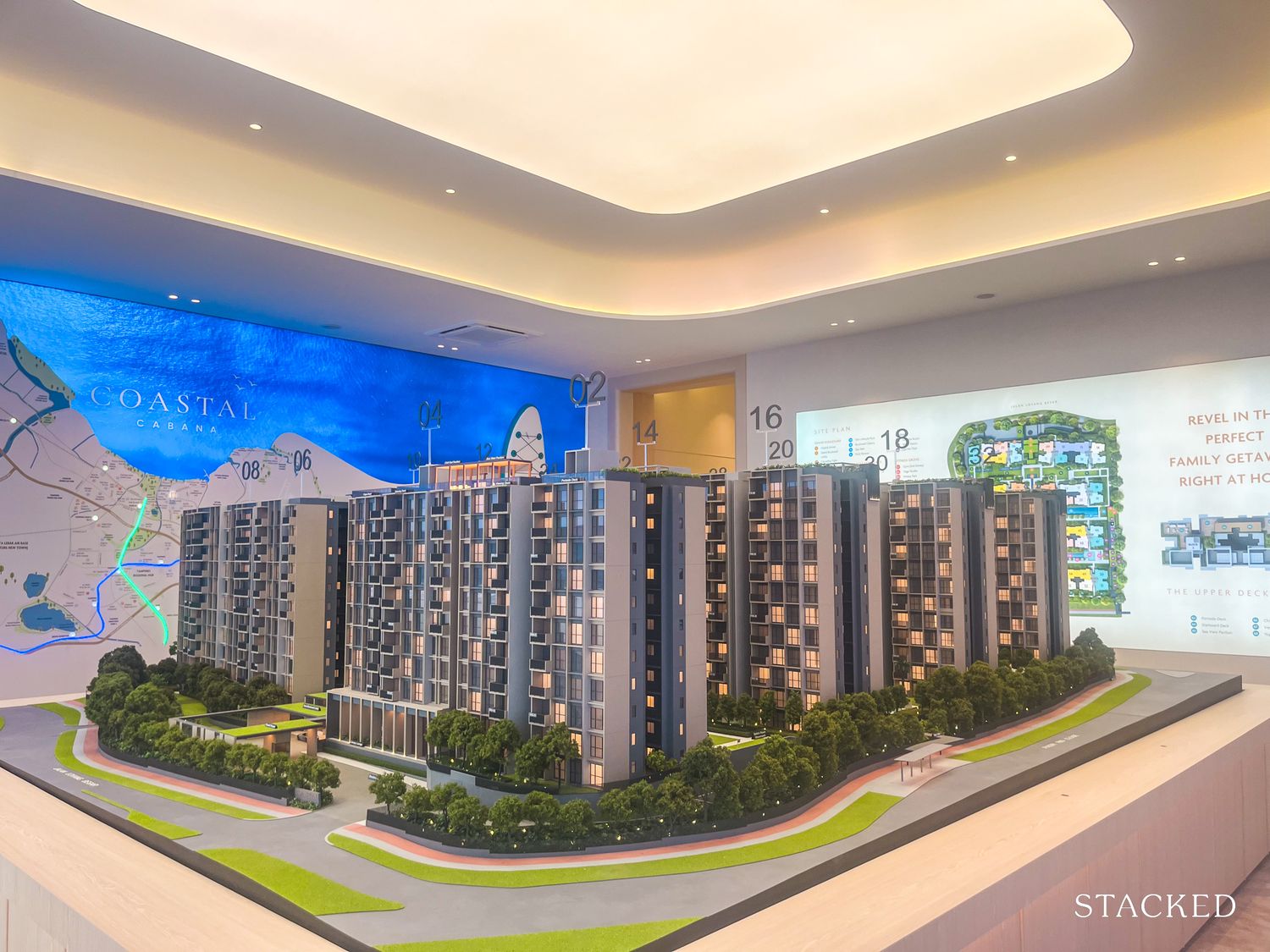
New Launch Condo Reviews Coastal Cabana EC Review: A Unique EC With Sea Views Priced From $1.438M

Property Market Commentary Which HDB Towns Sold the Most Flats This Year? The 2025 Rankings Reveal Some Surprises

Landed Home Tours We Toured a Freehold Landed Area Buyers Overlook — It’s Cheaper (and Surprisingly Convenient) From $3.2M
